Do you want to make your open chords for guitar sound more interesting? Care to make your open chords less boring? There are many things you can do to spruce things up! I’m going to show you a technique that is easy and can make your open chords come alive. I'm also going to show you an exercise to integrate this technique into your playing.
This technique involves creating tension and release within the chord. This keeps it interesting and will keep your listeners engaged. Let’s get started.
Dsus2 and Dsus4
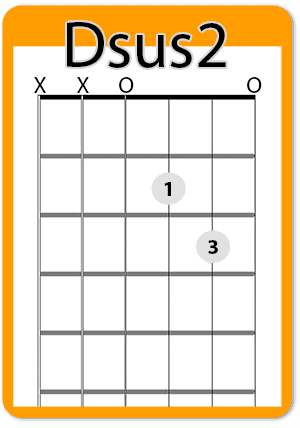
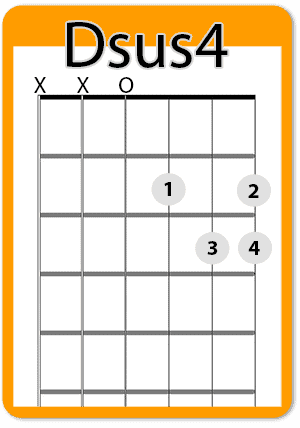
For this first example, we’re going to use a standard D chord. We’re going to create some motion by changing the D into a Dsus2 and a Dsus4.
Let’s start with our typical open D chord. To create a Dsus2, simply lift your middle finger off the fretboard so the high E string is now open. Naturally, if you put your middle finger back on then you’re at your standard D chord again.
Let’s stay on that standard open D chord. To create a Dsus4, simply place your pinky finger on the first string third fret. Now, you can combine the three chords by playing a Dsus4, then a standard open D and then a Dsus2. This adds variety and spice to your open chords for guitar.
Asus2 and Asus4
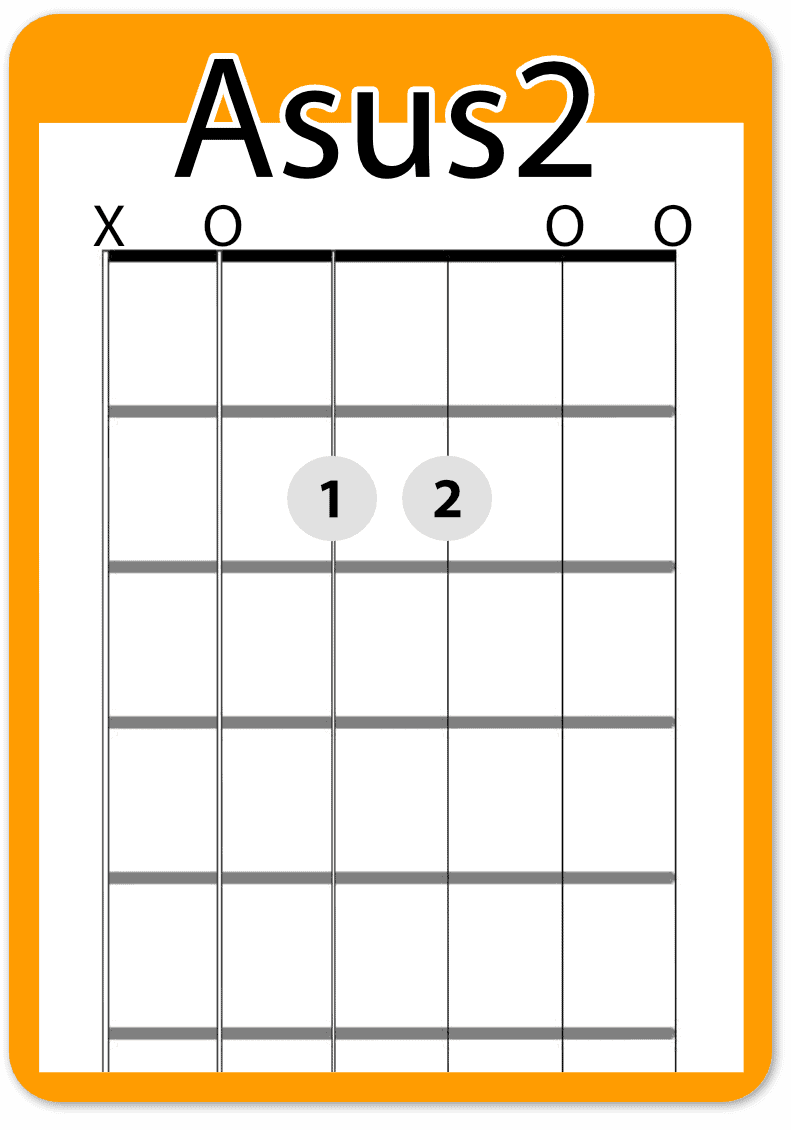
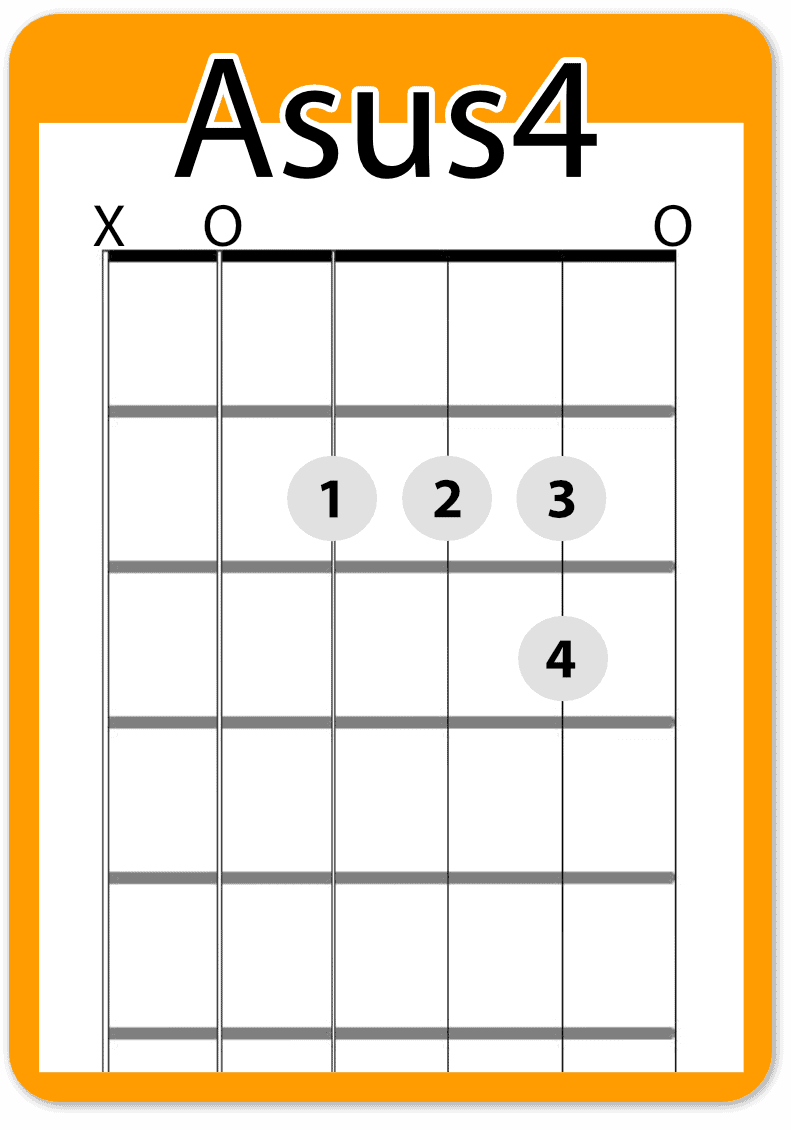
The same principle from above applies to a standard open A chord, so let’s finger that. To create an Asus4, simply place your pinky on the second string third fret. Some folks prefer to shift the ring finger up to the third fret. Any option is good to create your Asus4. This adds a subtle tension and feels real good while alternating with standard A chord.
To create an Asus2, lift your ring finger so that the second string is now open. Just like the example with D, you can alternate between A, Asus4 and Asus2 to create a nice flowing feel.
Esus4
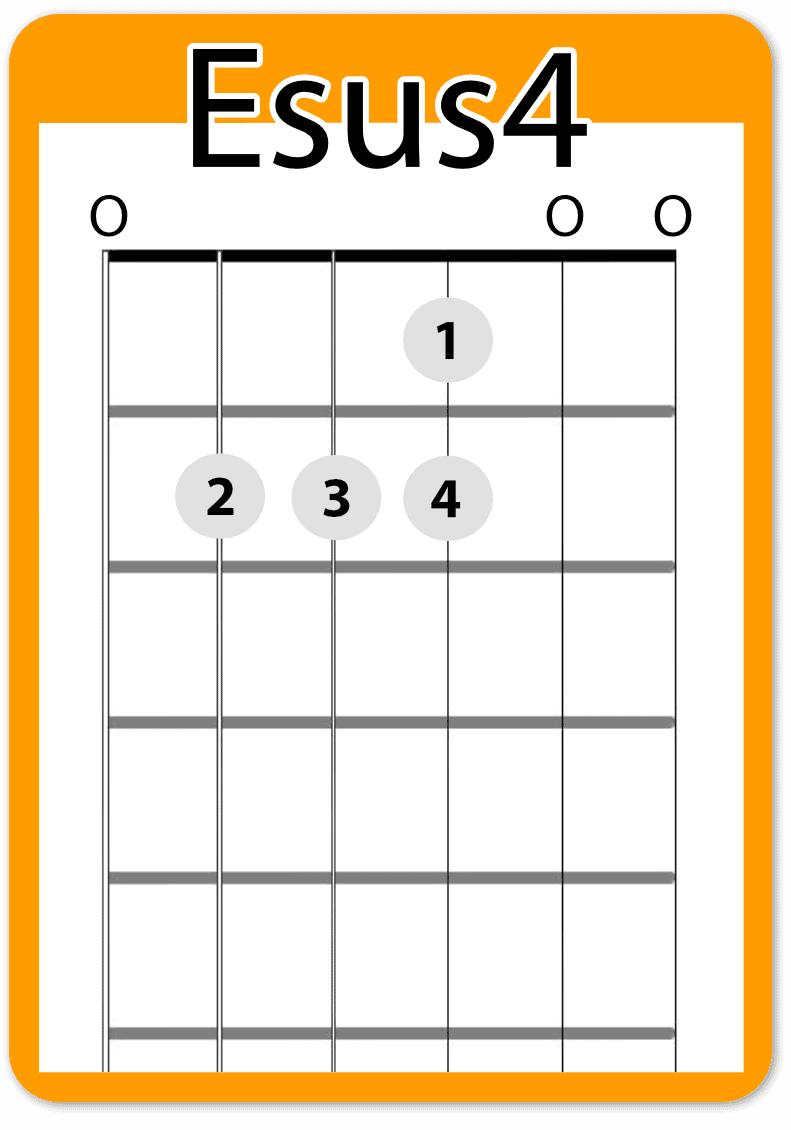
The Esus4 sounds really good. Place a standard open E chord and simply add your pinky finger on the third string second fret to create an Esus4.
G - Am7/G
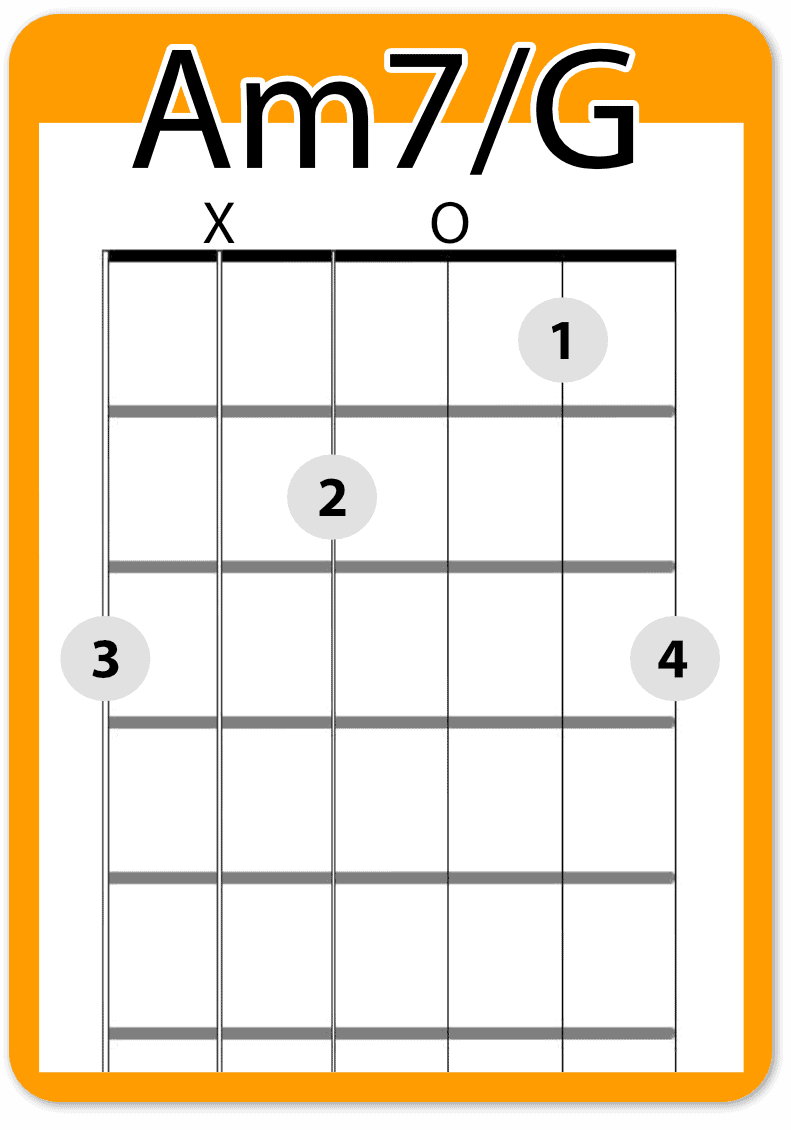
This one is used a lot, even by legendary acts like The Eagles and Cat Stevens. Here we create motion by going from a G to an Am7/G. To do this, place your three finger G chord with the pinky on the first string and your index open for now. To make the Amin7/G just move your middle finger down to the fourth string second fret and add your index on the second string first fret. Try alternating that with the G for an interesting suspended sound.
Cadd2 and C with high G
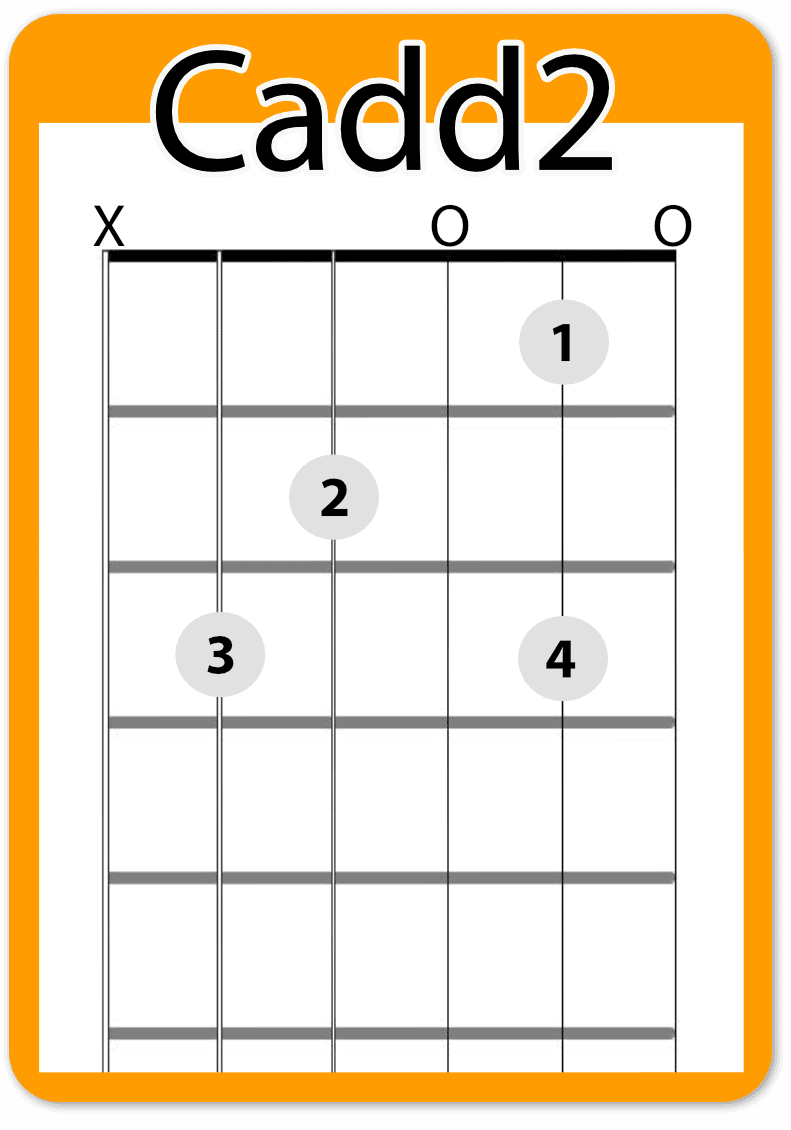
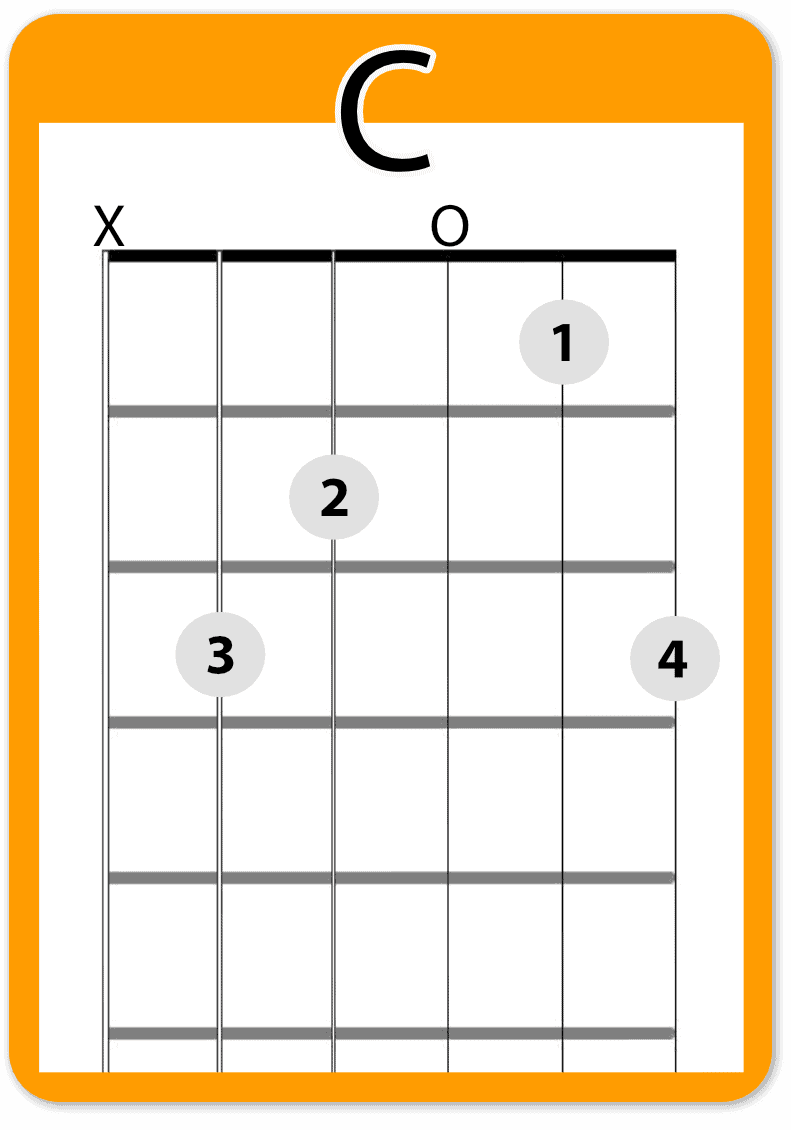
To create a Cadd2 (also known as a Csus2) from an open C chord, place your pinky on the second string third fret. The other variation is a C with a high G note. To create this, place your pinky on the first string third fret. This is still just a C chord but with a different voicing. In other words, we’ve just rearranged the order of the notes that make up a C chord.
These are nice variations to make your C open chords less boring.
Open Chord Enrichment Exercise
Now we’re going to combine all the techniques from above into one exercise. This will help you integrate all of them in a musical context. We’re going to keep a steady strum pattern for the entire exercise.
The chord order for this exercise is the following: D - Dsus4 - D - Dsus2 - Asus4 - A - Asus2 - A - E - Esus4 - E - G - Am7/G - G - C (w/ high G) - C - Csus2 - C . Feel free to separate this by sections to make it easier at first.
D - Dsus4 - D - Dsus2 - Asus4 - A - Asus2 - A -
E - Esus4 - E - G - Am7/G - G - Am7/G
C (w/ high G) - C - Cadd2 - C
Strum Pattern
We’re going to use a simple strum pattern throughout the entire exercise. The pattern we’ll use is D - D U D U D - D U D U. This pattern is for a 6/8 time signature. Try playing the pattern with just a standard open D chord to ensure you have it before moving on.
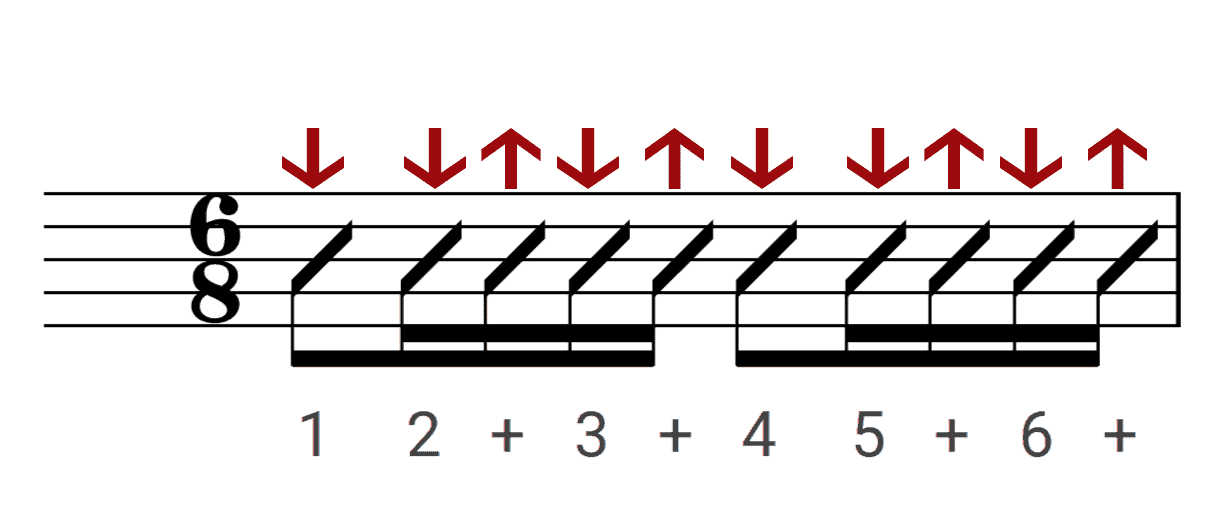
Conclusion
These tools will help you make chords more interesting by adding a few easy finger movements to create tension and release. These techniques are employed by guitarists everywhere and you can hear them in a plethora of recordings. As always, be patient, take the time to practice and have fun!
Save To Pinterest:



